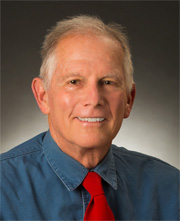
THAT TIME BASEBALL BARNSTORMED THE WORLDBy JOE GUZZARDI December 09, 2020
Over whiskey poured neat, the two drafted an ambitious, but successful plan to take Major League Baseball on a worldwide tour. Comiskey had been an above average 19th century player, but by 1912, he had become the founding, vastly wealthy owner of the Chicago White Sox. McGraw was widely acknowledged as the feisty genius who guided the New York Giants to ten National League pennants and three World Series triumphs. Less well-known is that McGraw, once a Baltimore Orioles and Giants third baseman, has a career on base percentage that ranks a solid third behind Ted Williams and Babe Ruth but ahead of Ty Cobb and Lou Gehrig. Author James Elfers, in his book “The Tour to End All Tours,” provides the full, fascinating story that began when Comiskey and McGraw, “after an all-night bender,” announced their grand design to the baseball world. Satirist Ring Lardner joked about the tour’s two-fold purpose. First, to further enrich the already wealthy Comiskey and McGraw who during the offseason, earned the then-princely sum of $3,000 weekly telling baseball yarns on Broadway. And second, “to prove that baseball is better than cricket, roulette, hopscotch, baccarat, Parcheesi, or any of the other sports in vogue abroad.” The rosters were stocked with the era’s superstars, most notably Christy Mathewson, Walter Johnson, Tris Speaker, and honeymooning Jim Thorpe. Although only a bench warmer during his brief Giants career, the Native American Thorpe returned from the 1912 Stockholm Olympics after winning Gold Medals in the decathlon and pentathlon, and was universally hailed a hero. Upon his return home, Thorpe dined with former President Theodore Roosevelt and was honored with a Broadway ticker tape parade. But the U.S. Olympic Committee discovered that Thorpe had played professional minor league baseball during the 1909 and 1910 summers. For earning $30 a month pittance, the USOC declared that Thorpe didn’t qualify as an amateur, and demanded that he return his gold medals, a decision that sparked worldwide outrage. Ironically, Thorpe had played baseball in the 1912 Olympics, a demonstration sport that year. Later, in 1951, Thorpe’s legend was memorialized in the Burt Lancaster film, “Jim Thorpe – All American.” The tour got off to a damp start on October 18 in Cincinnati, and the second game was played in cold, snowy Comiskey Park. Then the players proceeded to the La Salle Street station where a rousing crowd bid them a fond farewell. Three weeks later, via Iowa, Kansas, Missouri, and Texas, the road weary players reached California, where the red carpet awaited them. During the tour, Hans Lopert, speedier than Thorpe, raced a jockey-mounted horse around the basepaths. Leading as he rounded third, Lopert claimed that the horse knocked him off stride, and he “lost by a nose.” When the team arrived in Oxnard, Lopert recalled that ten stagecoaches met the team, and the cowboys hosted a roasted ox, fried onions and beer breakfast. Said Lopert: “Roasted ox and beer for breakfast sure puts hair on your chest!” Shortly after teams boarded the Empress of Japan on November 19 to sail to the Orient and travel 30,000 miles by sea and by rail, they encountered heavy seas. A typhoon that tossed 60-foot waves knocked the big ship 200 miles off course; seasickness overwhelmed the passengers. One wired home: “All well except the players.” A 125-pound fruitcake gifted to the players before they boarded went untouched. Once back on land in early December, the players eventually met Sir Thomas Lipton, the tea magnate, rode camels and donkeys to the Sphinx and the Great Pyramids before attending a luncheon with Abbas Hilmi Pasha, the last khedive of Egypt. They also had an audience with Pope Pius X, and in England played their last game in front of 30,000 delighted fans including King George V. The King called the game one of his most exciting sporting experiences. On March 3, 1914 the players departed Liverpool on the Lusitania, and returned to New York on March 7 where baseball dignitaries await them. But for the travel and baseball-exhausted players, there would be no rest. The teams headed to Hot Springs, Arkansas to begin spring training on March 10.
Representations of fact and opinions in comments posted are solely those of the individual posters and do not represent the opinions of Sitnews.
|
||||
